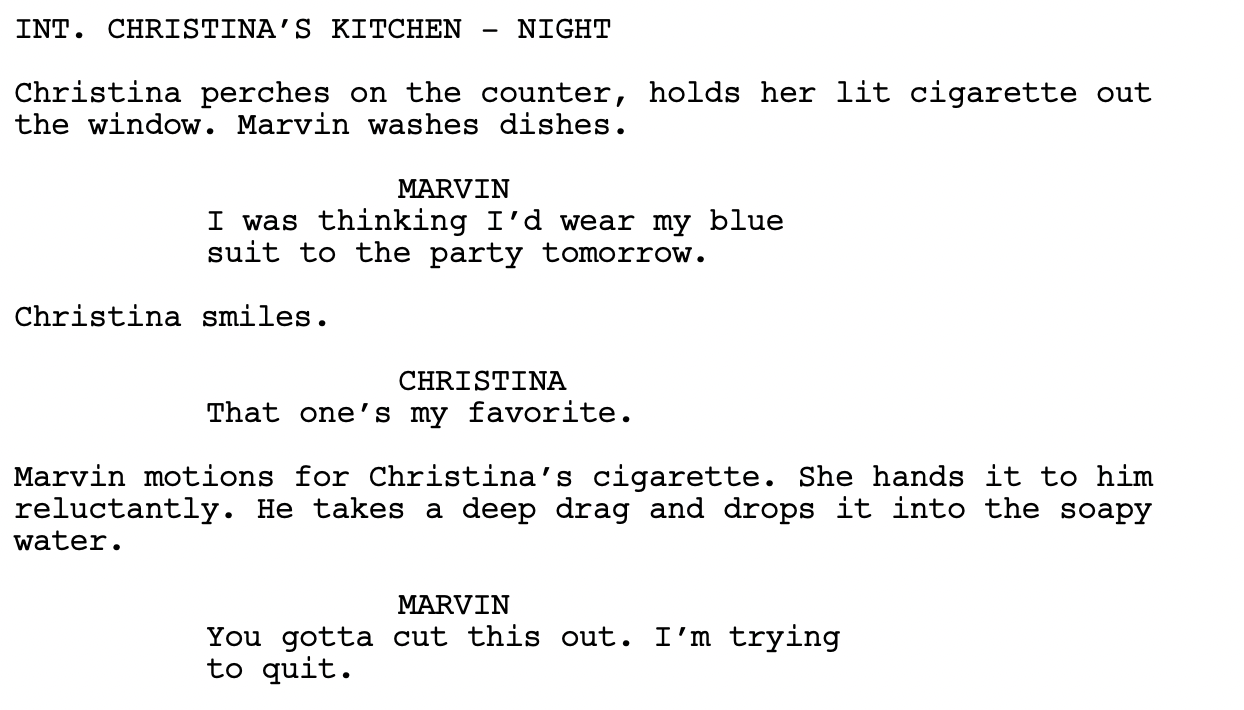Fix This - 9.8.24
A screenplay is a blueprint for a film. Everyone involved in making your movie will look at the script for guidance. Make sure they have all the information they need to do their jobs.
Take note, however, this does not mean over-describing every single tiny detail. It does mean making sure everything in your script is 1.) visual and 2.) critical to your story.
Look at the excerpt. Can you spot the part that doesn't meet the criteria?
There are a lot of little adjustments you could make to these lines to improve them, but the glaring mistake is “Christina smiles, remembering how good he looked in the suit on their wedding day.”
It’s tempting to include details like this because you want to add dimension to your story. The problem is that it won’t work in a screenplay.
“Christina smiles” is visual.
“Remembering how good he looked in the suit on their wedding day” is not.
We can see Christina smile on the screen. We can’t see what she’s thinking. One option to make this work is to put her thoughts in dialogue so the audience can hear what’s on her mind…
If you don’t want to include the information in dialogue, you can also use flashbacks to show us what a character is thinking. Here’s an example…
Before making your decision, it’s also worth asking yourself, “Does this detail matter?”
If the blue suit plays a key role in your story, keep the detail. If not, it’s also an option to cut the part about the wedding…
If the suit really doesn’t matter to the story at all, consider cutting that dialogue completely. You can use that space in your script for something more important that moves your story forward…
For more actionable insight, sign up for Screenwriting Essentials. In ten lessons, we’ll teach you our proven method for developing and completing a script that will capture the reader’s attention.





